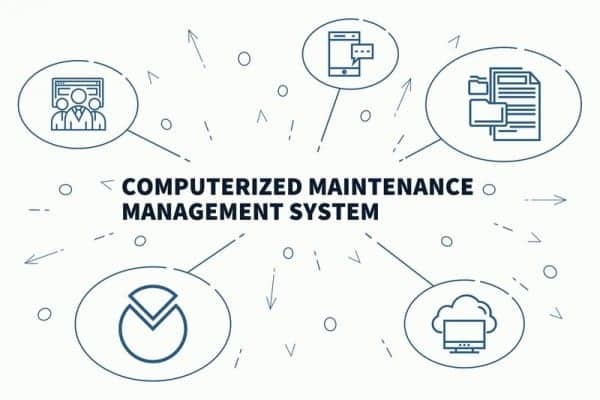A Computerized Maintenance Management System (CMMS), also known as Computerized Maintenance Management Information System (CMMIS), is a software package that maintains a computer database of information about an organization’s maintenance operations. Some key features of a CMMS include equipment hierarchies, preventative maintenance schedules, work order management, inventory control, and reporting.
What is a CMMS?
A CMMS is a software package that helps maintenance professionals maximize efficiency, track assets, and streamline workflow. Some key aspects of a typical CMMS include:
– Equipment hierarchies and databases: A CMMS allows users to organize all maintained assets into logical databases and hierarchies. Each asset is given an identification number for tracking. Critical details like manufacturer, model, and location are recorded.
– Preventative maintenance planning: Scheduled preventative maintenance tasks like inspections, lubrication, and part replacements are programmed into the system on a predefined schedule. Technicians are assigned work orders for upcoming planned work.
– Work order management: When assets require unplanned or corrective maintenance, work orders can be created to track the job from start to finish. Details like the problem reported, tasks performed, parts/materials used, and labor hours are captured.
– Inventory control: A Computerized Maintenance Management System integrates with an organization’s stock inventory to maintain optimal spare parts levels. Technicians can request parts for jobs, and the system records usage and triggers reorders.
– Reporting and analytics: Robust reporting features provide managers with key metrics on maintenance performance, equipment uptime/downtime, labor costs, and more. Issues can be more easily identified.
Benefits of a CMMS
There are many benefits that come with implementing a CMMS for an organization’s maintenance operations:
Improved Efficiency
By automating the task assignment, parts issuance, and reporting processes, a CMMS reduces paperwork and optimizes technicians’ time. Tasks can be more easily prioritized.
Increased Uptime
Scheduled preventative maintenance helps avoid unpredictable equipment failures. Downtime is minimized through proper work management and parts provisioning.
Better Budgeting
The system provides visibility into actual maintenance, repair, and operations (MRO) spending. Budgets can be set realistically based on historical data.
Regulatory Compliance
For industries like oil/gas, a CMMS provides auditable records to demonstrate adherence to safety and maintenance compliance standards.
Data-Driven Decisions
Key performance metrics and asset health reports allow managers to make strategic decisions backed by fact-based analysis instead of guesses.
Key Features of a CMMS
There are a number of important features common to robust CMMS solutions:
Equipment Database
As mentioned, organizing assets in a relational database with critical details is key. This forms the backbone of all other CMMS functions.
Preventative Maintenance
Automating recurring inspection and service tasks saves significant time and improves compliance. Conditions-based options also exist.
Work Order Management
The core work tracking and management center, allowing end-to-end visibility and integration with inventory, planning, and reporting.
Inventory Control
Integrating directly with an organization’s spare parts stock and materials receiving processes for seamless reordering.
Scheduling & Planning
Advanced features include forecasting, equipment overhauls, and capacity-based resource allocation to optimize planned work.
Reporting & Analytics
Robust standard and ad-hoc reports provide vital operation and performance metrics for management decision making.
Integration
Modern CMMS integrates asset and work order data across computerized systems for maximum visibility and efficiency.
Key Benefits of Preventative Maintenance
Preventative maintenance plays a major role in maximizing equipment reliability and lifespan while controlling repair costs. Some key advantages include:
Reduced equipment downtime – With standardized inspections and servicing, equipment failures can be caught early before major repairs are needed.
Longer asset lifespans – Proper lubrication, adjustments, and part replacements extend usability far beyond reactionary fixes. Overhauls are planned strategically.
Improved budgeting -Maintenance costs become predictable versus sporadic repairs. Budgets can accommodate scheduled work.
Enhanced safety -Inspection ensures compliance and catches hazards before an incident occurs. Risk reduction enhances workplace protection.
Protection of capital assets – Preventing premature failures protects the initial investment in major equipment like production machines.
Fewer emergency repairs -Costly overtime rates and rush jobs are minimized with reliable equipment availability.
Prioritizing Preventative Maintenance
For asset-intensive organizations, preventative maintenance should be prioritized strategically based on criticality analysis. Considerations include:
Safety impacts – Tasks on equipment involving potential hazards receive highest focus.
Downtime costs -More expensive equipment to repair/replace and assets whose failure causes bottlenecks.
Regulatory requirements -Industries like oil/gas subject to strict maintenance compliance.
Reliability data -Equipment with history of unexpected issues or failures requires close attention.
Industry best practices -Manufacturers’ recommendations and industry experience guides priorities.
Condition monitoring -Sophisticated CMMS use oil analysis, vibration, and other computerized checks.
*Note:
1. Source: Coherent Market Insights, Public sources, Desk research
2. We have leveraged AI tools to mine information and compile it

